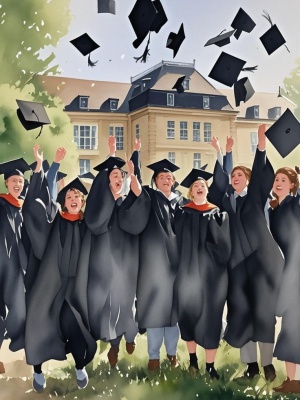The Art and Science of Watercolor Making: A Comprehensive Guide
Watercolor painting has captivated artists for centuries with its luminous transparency and fluid beauty. But have you ever wondered how these magical paints are created? This in-depth guide explores the fascinating process of watercolor making, from raw materials to finished product, providing valuable insights for both artists and curious enthusiasts.
The Essential Components of Watercolor
Creating high-quality watercolor paints requires understanding three fundamental components that work in harmony to produce the perfect consistency and pigmentation.
1. Pigments: The Color Foundation
Pigments form the heart of any watercolor paint. These finely ground particles can be:
- Natural inorganic (earth pigments like ochres and siennas)
- Synthetic inorganic (modern laboratory-created colors)
- Organic (plant or animal-derived, though less lightfast)
For those interested in exploring color theory further, our AI painting guide offers additional insights into color selection and combinations.
2. Binders: Holding It All Together
The binder, typically gum arabic, serves several crucial functions:
- Keeps pigment particles suspended evenly
- Creates the proper viscosity for application
- Allows the paint to rewet after drying
3. Additives: Fine-Tuning Performance
Small amounts of additives can significantly alter paint characteristics:
- Glycerin or honey for improved rewetting
- Ox gall to enhance flow and reduce surface tension
- Preservatives to prevent mold growth
The Watercolor Manufacturing Process
Professional watercolor production follows a precise sequence to ensure quality and consistency. According to experts at Handprint, a leading watercolor resource, the process typically involves these key steps:
1. Pigment Preparation
Raw pigments undergo rigorous testing for lightfastness and toxicity before being ground to an ultra-fine powder. The particle size significantly affects the paint's transparency and staining properties.
2. Binder Mixing
Gum arabic is dissolved in water to create a viscous solution, often combined with small amounts of plasticizers and humectants. The exact proportions vary between manufacturers and affect the final paint's working properties.
3. Milling and Refining
The pigment and binder mixture passes through a triple-roll mill multiple times to achieve perfect dispersion. This critical step ensures no pigment clumps remain, which could affect application smoothness.
Common Watercolor Making Challenges and Solutions
Creating perfect watercolors involves overcoming several technical hurdles. Here's a problem-solution matrix for common issues:
| Problem | Solution |
|---|---|
| Poor pigment dispersion | Increase milling time or adjust binder viscosity |
| Paint drying too quickly | Add more humectant like glycerin |
| Mold formation | Include preservatives like clove oil or phenol |
| Granulation issues | Adjust pigment particle size distribution |
For artists looking to experiment with their own watercolor creations, our AI art guide provides complementary techniques for digital color experimentation.
DIY vs. Professional Watercolors
While commercial watercolors offer consistency, many artists enjoy making their own paints. Here's how the two approaches compare:
Professional-Grade Watercolors
Manufacturers like Daniel Smith use:
- Precisely controlled manufacturing environments
- Extensive pigment testing
- Specialized equipment for perfect consistency
Homemade Watercolors
DIY enthusiasts can achieve remarkable results with:
- High-quality dry pigments
- Pure gum arabic solution
- A glass muller for hand grinding
- Small porcelain or glass mixing surfaces
Conclusion: The Enduring Magic of Watercolor Making

Watercolor making blends artistic sensibility with scientific precision. Whether you're a professional artist seeking to understand your materials better or a hobbyist interested in creating custom colors, the process offers endless possibilities for exploration. The journey from raw pigment to vibrant paint connects modern artists with centuries of tradition while allowing for personal expression through custom formulations.

For those inspired to try watercolor techniques, explore our gallery for beautiful examples of watercolor art created with both traditional and digital methods.